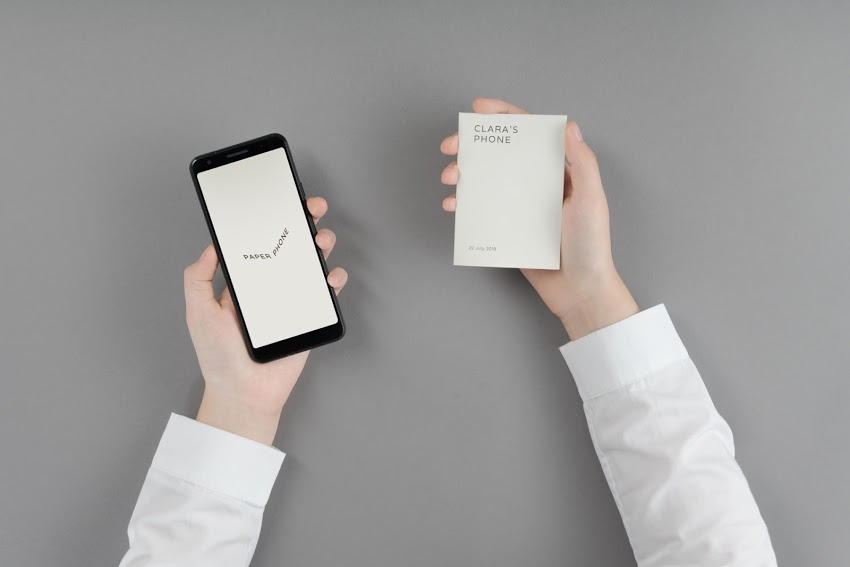‘Digital Wellbeing Experiments’ – Confronting Technology and Health’s largest questions in the simplest ways.
In 2019 Google launched the platform “Digital wellbeing Experiments”. In recognition of the negative impacts our digital devices are having on our lives Google is striving for a more innovative approach to help people find a balance with technology. This is reflected in the platform’s new and unique model. After providing the platforms first few additions Google have handed over the creative reigns to non-google developers and innovators all over the world, embedding an exciting ideological sense of collectivity within “Digital Wellbeing Experiments”. Democratising how these core issue in the tech industry are being tackled has lead to new questions being asked about the topic of “Digital Wellbeing”.
The Issue – Mobile Addiction
It is becoming increasingly evident that nostalgic notions of liberation and interconnectedness are materialising more in the form of a hostage situation. Shambare, Rugimbana, and Zhowa (2012) consider mobile phone addiction to be one the greatest addictions in current times. The worst affected being the demographic of 18-24 yr olds who never disconnect from their smart phones even while in bed or driving (WHO, 2011). More recent evidence “provide’s an insight on smartphone addiction and its negative consequences with respect to personal, family conflict and poor academic performance among adolescents” (Mahapatra, 2017).
“Digital Wellbeing”, under a variety of pseudonyms, is not a new concept. However, there is little empirical evidence to suggest we have been combatting mobile phone addiction effectively and openly. This could be due to the heterogeneity of use preferences among demographics, diversifying the outlets through which addiction can take hold. For example; Female users are more likely to be addicted to communications and social networking, while male users tend to be dependant on internet games (Kuss and Griffiths, 2012). Furthermore, people with low self esteem spend more time on entertainment whilst extroverts are associated with social networking addiction. (Leung 2008, Wang et al. 2015).
By decentralising the development process “Digital Wellbeing Experiments” aims to harness the creativity from a plethora of developers and broaden the angles through which the heterogenous nature of ‘Digital Wellbeing’ can be addressed. Focussing on a range of ethnographic studies we can see how the diverse range of “Digital Wellbeing Experiments” directly link to a range of behavioural patterns among users and devices associated with mobile phone addiction.
The Solution – Experiments
Stothart (2015) found that interruptions come at the cost of performance on attention demanding tasks, even when the notification is not attended to, which they believe is due to the mind wandering what the notifications can elicit. Rosen (2013) takes this further with the concept of “Phantom Vibration” a phenomenon in which users perceive a vibration in their pocket without it actually taking place. Desert Island, Morph and Postbox by Google Creative Lab allow users to take control of notification anxiety.
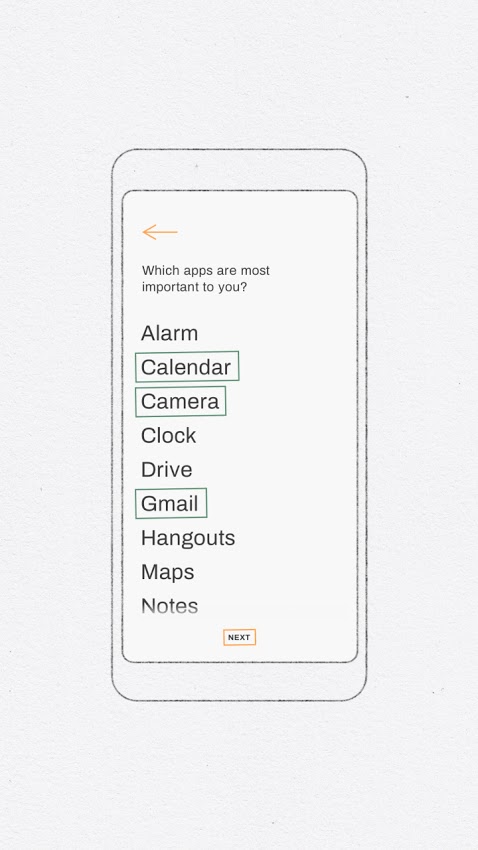
Desert Island – Challenge yourself to go a day with as little apps as you can. Select what you need. 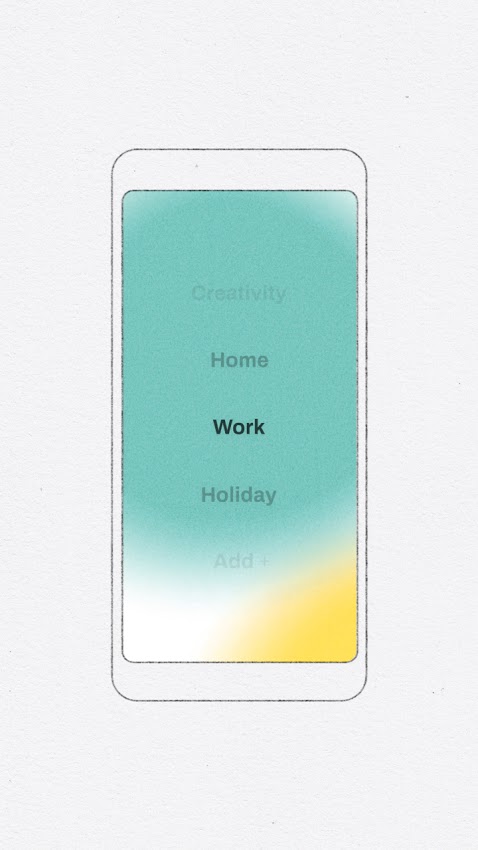
Morph – Group apps for use at certain times of the day. Your phone will automatically grant or deny access. 
Postbox – Withhold notifications until a specified time of day where they will be organised and delivered.
Social and entertainment apps are engineered to have automatic engagement triggers e.g. infinite scroll recommended content. One participant in a recent ethnographic study reported “mindlessly scrolling for more content and getting into rhythm was hard to end” (Aranda, Baig, 2019). In the same study it is reported that self-reflection is an essential part of the disconnection process. The below apps play on this, using various affordances, to make users aware of their own behaviours and encourage voluntary disconnection.
“Digital Detox” by Marco Land and “Anchor” by Brendan Browne-Adams, Lahari Goswami, Miki Chiu, Tayo Kopfer and Two much Studio have re-contextualised the renowned “infinite social media scroll” into playful yet thought provoking applications. “Screenhive” by Riddhi Bagadiaa and Ksshiraja Bagadiaa incorporates a screen stopwatch into the mobile interface serving as a persistent reminder, deterring users from loosing track of time and maintaining productivity.

Digital Detox – Tracks the distance scrolled on sites and translates the value from pixels to an actual physical distance. This value is then used to digitally “walk” along the Camino Frances. 
Anchor – End the endless newsfeed scroll. Anchor allows the user to scroll into the abyss. 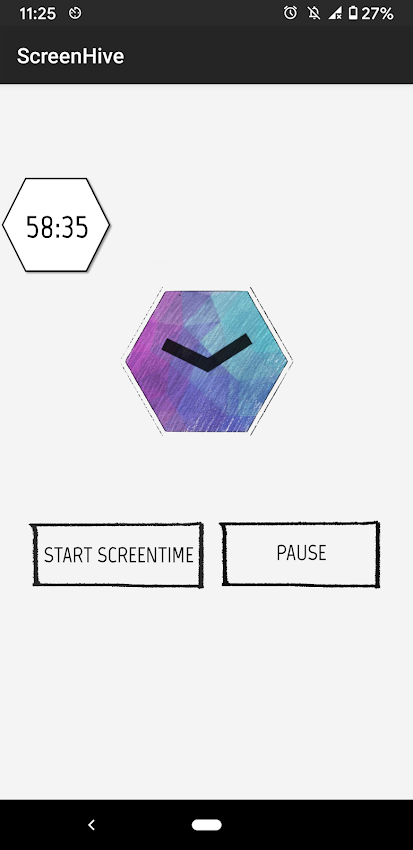
Screenhive – This widget is visible over all other apps.
Two of these experiments generate deeper discussion in the “Digital Wellbeing” discourse, testifying the significance of materiality of the medium. ’Envelope’ and ‘Paper Phone’ by Special Projects, a creative design and invention consultancy, infiltrate the user-device relationship with digital technology’s revolutionary predecessor, paper.
“Physical constraints of media shape the way information is produced, the way social relationships are organised and the way we see the world” (Mcluhan,1964).
‘Envelope’ – A set of envelopes which temporarily transform your phone into a simpler, calmer device, helping you take a break away from your digital world.
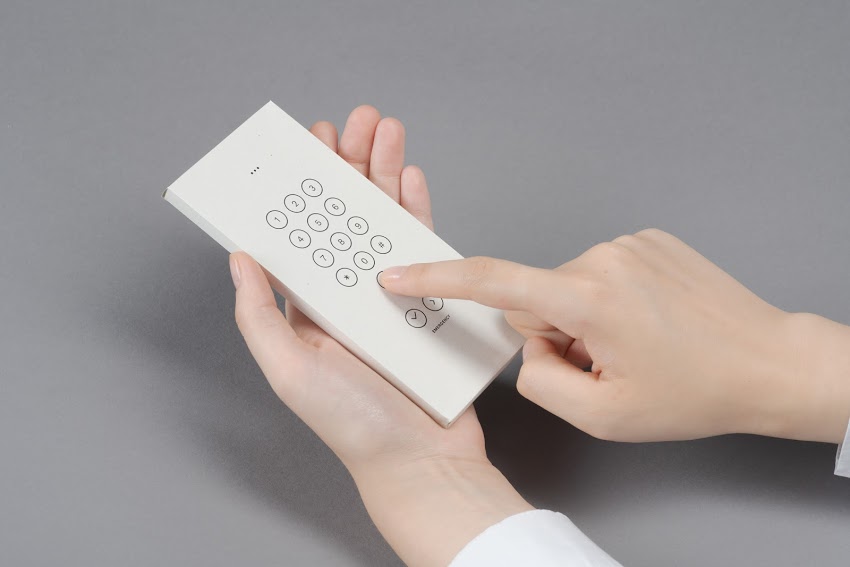
One envelope turns your phone into a very basic device which can only make and receive calls 
while the other into a camera with no screen
‘Paper Phone’ – Print your mobile necessities or extras directly to a sheet of paper. Customisable “paper apps” like recipes, phrasebooks and notepads let you get things done or unwind in a more focussed way. All of the code is available on Github for people to adapt and evolve.
Special Projects have re-contextualised “Digital Wellbeing” into the more abstract yet fundamental territory of media materiality. The crude act of enveloping one’s phone in paper or simply printing off a replacement dislocates the user from the “in-materiality” (Van Der Bloomen et al, 2009) of mobile devices. Furthermore in relation to Kittler’s work on “the basic material structures of the technologies themselves and the changes they introduce into culture” (1999) the specific deployment of paper develops symbolic significance. I believe the familiarity and disposability of paper in these technologies empower the user to de-construct notions that mobile devices are “anthropomorphic machines” (Miller, 2019).
In Summary, the uniqueness of “Wellbeing Experiments” is the experimental approach. The platform is not so centred around clinically prescribing apps to resolve the issues of users but more about highlighting the issues, creating the discussion and encouraging voluntary disconnection. The platform is facilitating innovation by drawing on the creativity of developers around the world. This generates a melting pot of ideas and experiments targeting an assortment of issues we have with technology and encouraging users to develop a healthier relationship with their devices.
References;
Banos, Oresti, et al. ‘The Mining Minds Digital Health and Wellness Framework’. BioMedical Engineering OnLine, vol. 15, no. 1, 1, BioMed Central, July 2016, pp. 165–86. biomedical-engineering-online.biomedcentral.com, doi:10.1186/s12938-016-0179-9.
Casemajor, Nathalie. ‘Digital Materialisms: Frameworks for Digital Media Studies’. Westminster Papers in Communication and Culture, vol. 10, no. 1, 1, University of Westminster Press, Sept. 2015, pp. 4–17. www.westminsterpapers.org, doi:10.16997/wpcc.209.
Digital Wellbeing Experiments | Experiments with Google. https://experiments.withgoogle.com/collection/digitalwellbeing. Accessed 14 Sept. 2020. Ding, Jiao-Er, et al. ‘Development Of A Smartphone Overuse Classification Scale’. Addiction Research & Theory, vol. 27, no. 2, Taylor & Francis, Mar. 2019, pp. 150–55. Taylor and Francis+NEJM, doi:10.1080/16066359.2018.1474204. ‘Find a Balance with Tech Using Digital Wellbeing Experiments’. Google, 23 Oct. 2019,
https://blog.google/outreach-initiatives/digital-wellbeing/digital-wellbeing-experiments/. Gane, Nicholas, and Hannes Hansen-Magnusson. ‘Book Review: Materiality Is the Message?’ Theory, Culture & Society, vol. 23, no. 7–8, Dec. 2006, pp. 315–23. DOI.org (Crossref), doi:10.1177/0263276406075080. Mahapatra, Sabita. ‘Smartphone Addiction and Associated Consequences: Role of Loneliness and Self-Regulation’. Behaviour & Information Technology, Taylor & Francis, Jan. 2019. world, www.tandfonline.com,
https://www.tandfonline.com/doi/abs/10.1080/0144929X.2018.1560499. Miller, Daniel. ‘Smartphones: The Cultural, Individual and Technical Processes That Make Them Smart’. The Conversation,
http://theconversation.com/smartphones-the-cultural-individual-and-technical-processes-that-make-them-smart-106560. Accessed 22 Sept. 2020. Price, Stephanie. ‘Young People Dependent on Smartphones at Increased Risk of Depression’. Health Europa, 1 Oct. 2019, https://www.healtheuropa.eu/smartphone-dependency-depression/93711/.
The Extension of Man – Hacking the Body | ThingTank Lab. http://www.criticalmaking.com/ddimit/?p=495. Accessed 22 Sept. 2020.
The Search for JOMO: New Research on Digital Wellbeing. https://www.blog.google/products/android/search-jomo-new-research-digital-wellbeing/. Accessed 14 Sept. 2020. Understanding-Media-Mcluhan.Pdf.
https://designopendata.files.wordpress.com/2014/05/understanding-media-mcluhan.pdf. Accessed 22 Sept. 2020. Wilmer, Henry H., et al. ‘Smartphones and Cognition: A Review of Research Exploring the Links between Mobile Technology Habits and Cognitive Functioning’. Frontiers in Psychology, vol. 8, Apr. 2017, p. 605. DOI.org (Crossref), doi:10.3389/fpsyg.2017.00605.

